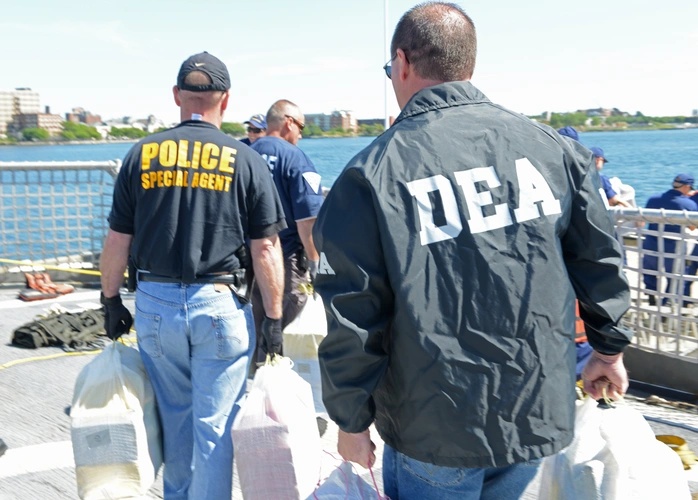Impulsiveness, Law, and the Immigration Order
Mostly lost in the discussions about the courts’ blockage of President Trump’s Executive Order on immigration (EO) is that the trial judges simply granted a “Temporary Restraining Order” (TRO). A TRO doesn’t decide the substantive issues in a case but keeps the status quo intact until the court can examine those issues carefully.
Published by The Lawfare Institute
in Cooperation With

Mostly lost in the discussions about the courts’ blockage of President Trump’s Executive Order on immigration (EO) is that the trial judges simply granted a “Temporary Restraining Order” (TRO). A TRO doesn’t decide the substantive issues in a case but keeps the status quo intact until the court can examine those issues carefully.
That made great sense and was a narrower ground for quickly blocking the EO than most of the media has been reporting. The purpose of a TRO is to prevent “irreparable injury” before a court is able to give full and reasoned consideration to the lawfulness of the challenged action. It’s a stopgap measure. The main legal question before the district courts considering Trump’s EO has been about which side—the visa holders and refugees immediately affected by the Order or the national interest in protecting the country from terrorism—would suffer the greater immediate “irreparable injury” if the EO went into effect without a pause for at least preliminary review by a court.
With carefully vetted visa holders and refugees being callously detained in airports after their arrival and utter disregard for their immediate situations as human beings, and with others about to board planes to the United States to fulfill immediate plans, their “irreparable injury” was obvious. And although the President claimed that these travelers posed an irreparable terrorism threat, there was zero evidence of that, and the Government either has none or has chosen to withhold it from the courts rather than exercise its right to submit classified information under seal, where it would be available to the court but not the plaintiffs. So the plaintiffs have been winning TROs.
The district courts have sometimes made short comments about some aspects of the weighty substantive issues in the cases—for example, whether the EO is an unconstitutional “Muslim Ban” or a denial of Fifth Amendment due process, and the scope of Executive power over immigration under the case law. But the whole point of a TRO is to preserve the status quo and avoid “irreparable injury” so that everyone can take the time to give full and reasoned consideration to those substantive issues. A TRO is a rejection of impulsiveness. A TRO says, in effect, we need some time to give these issues reasoned consideration—for fuller briefs to be filed, for replies to be submitted, for judges to research, reflect, and write about issues they have probably never considered before. A TRO insists that before people are “irreparably injured,” the law insists upon rationality and reflection. It therefore requires a demonstration of irreparable injury, which the State of Washington made with detailed factual declarations of harm, and the Government relying only on the face of the EO to assert harm in a conclusory way.
Thus, shortly after Federal District Judge James Robart in Washington State granted his TRO, he set down a speedy briefing schedule for the parties to follow to consider the substantive merits within 14 days. Even then, the only issue he would then decide is whether to issue a “preliminary injunction.” A preliminary injunction will be granted only if the plaintiff can show a “likelihood of succeeding on the merits.” A full trial would come later. The hallmarks of law and judging are reasoning, reflection and judgment, not impulsiveness. At each stage it is open to the Government to make the case for why a temporary stay of the ban will cause irreparable injury to national security, but if it does not to do that, it has no basis to complain that the courts are doing what they are supposed to do: reason and consider before deciding.
Why does it matter to appreciate that the district courts around the country have been issuing TROs? The key reason is that under the Federal Rules of Civil Procedure a TRO is rarely appealable. The U.S. Court of Appeals for the Ninth Circuit made the right decision to reject the Trump Administration’s appeal, but it could have done so on a narrower ground than it did: It could simply have said that the TRO was not appealable and that the Government would soon have its chance in the District Court to fully defend its position that the EO is lawful. That was the lead argument the plaintiffs in the District Court made before the Ninth Circuit.
The Ninth Circuit went further and treated the District Court order as granting a preliminary injunction, and thus examined at some length who was “likely to prevail on the merits.” Neither reason the Ninth Circuit gave for treating the District Court order as a preliminary injunction was compelling. True, the parties had “vigorously contested the legal basis for the TRO … before the District Court,” including arguments on the merits. But that was necessarily a lightning-quick contest, with the TRO issued the same day it was argued. The Ninth Circuit also said it appeared that “the TRO would remain in effect for longer than fourteen days,” but that wasn’t necessarily so under the District Court’s scheduling order. Since the case was understandably getting great public attention, the Ninth Circuit took the reasonable step of spelling out for new readers why the District Court found the “irreparable injury” test met. Similarly, the Ninth Circuit was right to underscore that the legal issues presented by the plaintiffs were weighty and important. But nothing further about the merits of the case by the Ninth Circuit was necessary. Indeed, the speed of the proceedings made a thorough consideration of the merits of the case by the Ninth Circuit impossible.
If the case goes to the Supreme Court over the next days, the Supreme Court can and should dismiss the case as unappealable at this point. By avoiding its own intervention beyond that, the Supreme Court would rightly avoid impulsively supporting either side’s arguments about the legality of the EO, and would be supporting the thorough and careful judicial processes that lie ahead in the lower courts. At the same time, it would also be allowing the TRO to stay in effect and assuring that irreparable and callous harm to individuals was avoided.
What we’ve also learned from the Trump EO is how damaging impulsiveness is to the Executive Branch’s own ability to accomplish its objectives. This EO was rushed into effect, bypassing the usual vetting and planning before important executive orders are issued. As a result, the Executive Order wasn’t drafted in ways that could have reduced the risks of being invalidated and could have reduced the immediate human misery and chaos it in fact caused.
As Jack Goldsmith has argued on this site, this Executive impulsiveness has surely affected how the courts are assessing the EO. And although the media has largely missed this key point, the judges have themselves avoided impulsiveness while also avoiding irreparable harms to innocent human beings as the judicial process moves forward.



.png?sfvrsn=48e6afb0_5)

